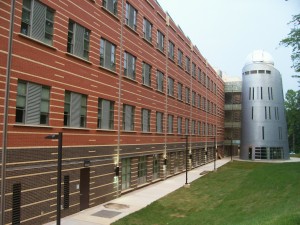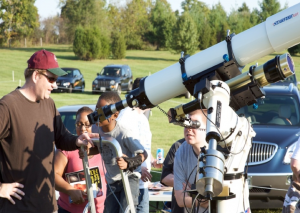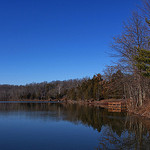Key information for official sites with agreements:
- Camp High Road is open unless specified on Camp High Road specific page
- C.M. Crockett is open only during periods specified on the Crockett specific page
- Meadowkirk observing requires explicit permission. See Meadowkirk page for details
- Sky Meadows State Park is open for vetted volunteers only unless posted on the Sky Meadows specific page
- Spruce Knob Mountain Center: See site specific page or contact site coordinator for availability

Our meetings on the second Sunday of the month, online.
Our meetings web page, has additional details.
We look forward to seeing you on Sunday evenings!

Our meetings on the second Sunday of the Month, The events are normally held evening at 7:00 pm in Research Hall Room 163 on the campus of George Mason University.
Our meetings web page, has directions and additional details.
We look forward to seeing you on Sunday evenings!
AWESOME super dark night for a fairly average shower, usually producing about 20 meteors per hour at its peak. It is produced by dust particles left behind by comet C/1861 G1 Thatcher, which was discovered in 1861. The shower runs annually from April 16-25. It peaks this year on the night of the night of the 22nd and morning of the 23rd. These meteors can sometimes produce bright dust trails that last for several seconds. The nearly new moon will ensure dark skies for what should be a good show this year. Best viewing will be from a dark location after midnight. Meteors will radiate from the constellation Lyra, but can appear anywhere in the sky.

NOVAC is cancelling in-person events through May 10 in accordance with CDC recommendations.
See front page of NOVAC Site for changes to event.
More information about Great Meadow including directions and parking visit the Great Meadow Site page.

NOVAC is cancelling in-person events through May 10 in accordance with CDC recommendations.
Head over to the Astronomy Day page for more information.

NOVAC is cancelling in-person events through May 10 in accordance with CDC recommendations.
Please read the C.M. Crockett Page for park details.
The nearly full moon will be a problem this year, blocking out all but the brightest meteors. But if you are patient, you should still should be able to catch a few good ones. Best viewing will be from a dark location after midnight.
The Eta Aquarids is an above average shower, capable of producing up to 60 meteors per hour at its peak. Most of the activity is seen in the Southern Hemisphere. In the Northern Hemisphere, the rate can reach about 30 meteors per hour. It is produced by dust particles left behind by comet Halley, which has known and observed since ancient times. The shower runs annually from April 19 to May 28. It peaks this year on the night of May 6 and the morning of the May 7. Meteors will radiate from the constellation Aquarius, but can appear anywhere in the sky.
